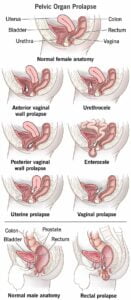Understanding Frozen Shoulder: Diagnosis and Treatment
Diagnosis: During a physical examination, a healthcare provider assesses your shoulder by asking you to move your arm in specific ways. This helps determine pain levels and the extent of active range of motion. Additionally, you may be asked to relax your muscles while the provider moves your arm (passive range of motion). Frozen shoulder affects both active and passive movement.
While signs and symptoms alone often lead to a diagnosis of frozen shoulder, imaging tests—such as X-rays, ultrasound, or MRI—can rule out other underlying issues.
Treatment: The primary goal of frozen shoulder treatment is to manage pain and maintain as much shoulder mobility as possible. Here are the key approaches:
Medications:
- Pain relievers like aspirin and ibuprofen (Advil, Motrin IB, others) can help reduce pain and inflammation associated with frozen shoulder.
- In some cases, stronger pain-relieving and anti-inflammatory drugs may be prescribed.
Therapy:
- A physical therapist guides you through range-of-motion exercises to aid shoulder recovery.
- Consistent commitment to these exercises is crucial for regaining movement.
Surgical and Other Procedures:
- Most frozen shoulders improve naturally within 12 to 18 months.
- For severe or persistent symptoms:
- Steroid Injections: Corticosteroids injected into the shoulder joint can alleviate pain and enhance mobility, especially when administered early in the frozen shoulder phase.
- Hydrodilatation: Sterile water injected into the joint capsule stretches the tissue, facilitating joint movement. Sometimes combined with a steroid injection.
- Shoulder Manipulation: Under general anesthesia, the care provider moves the shoulder joint in various directions to loosen the tightened tissue.
- Surgery: Rarely needed, surgery removes scar tissue from inside the shoulder joint. This minimally invasive procedure involves small incisions guided by a tiny camera (arthroscopy).
Lifestyle and Home Remedies:
- Continue using the shoulder and arm within pain and range-of-motion limits.
- Applying heat or cold can help relieve pain.
Alternative Approaches:
- Acupuncture: Hair-thin needles are inserted into specific points on the body. Treatments are relatively painless and last 15 to 40 minutes.
- Nerve Stimulation (TENS): A small electrical current delivered through skin electrodes may curb pain by releasing endorphins or blocking pain-carrying fibers.
Preparing for Your Appointment:
- You may initially see your primary care provider or be referred to an orthopedist or physiatrist specializing in bone and muscle treatment.
- Be ready with:
- A detailed description of symptoms and their onset.
- Information about your medical history and any family health issues.
- A list of medications and dietary supplements you take.
What to Expect from Your Doctor:
- Be prepared to answer questions such as:
- What exacerbates your symptoms?
- Have you previously injured the affected shoulder?
- Do you have diabetes?
- Have you recently undergone surgery or experienced prolonged shoulder immobility?
Feel free to ask if you need any further information! 😊


